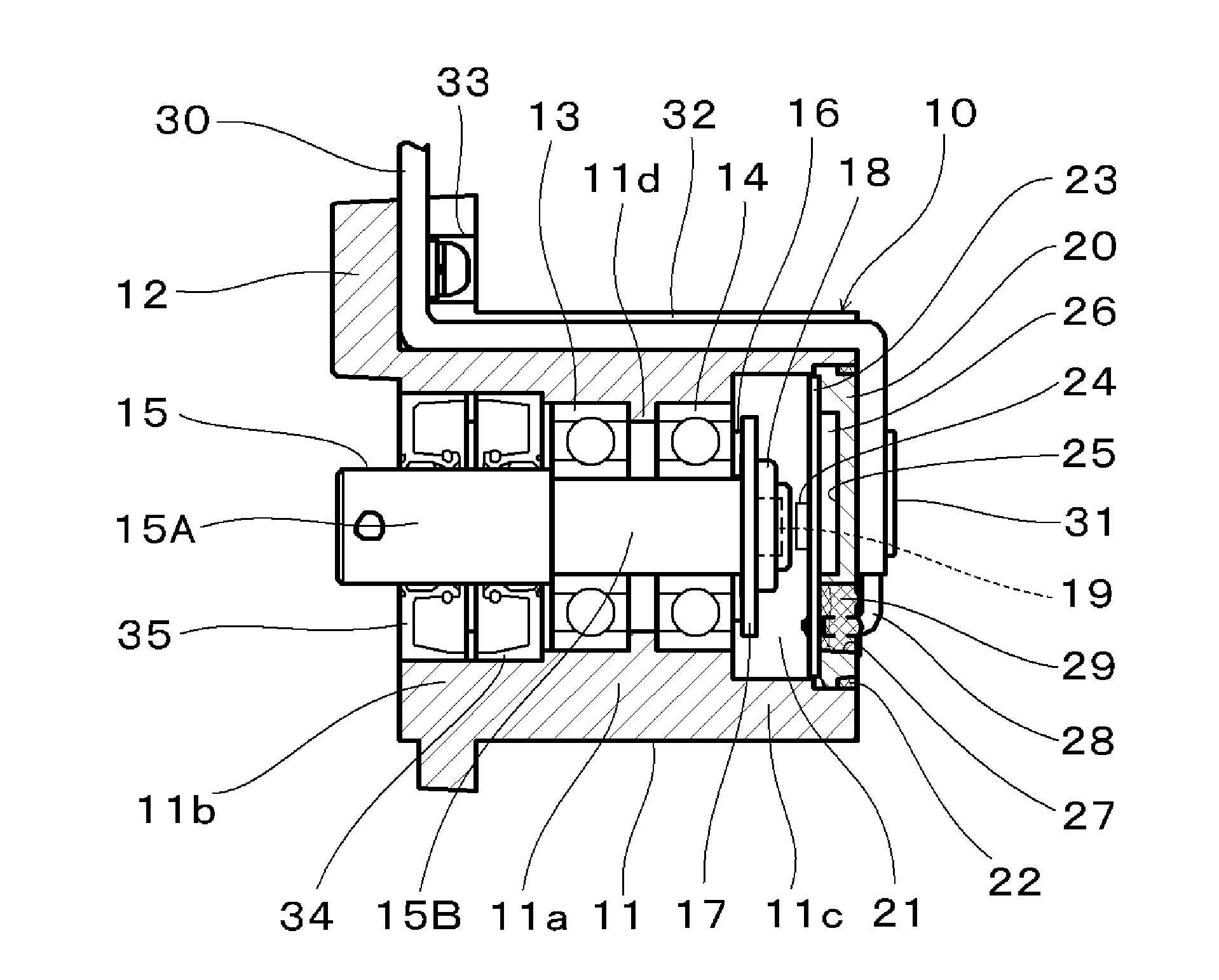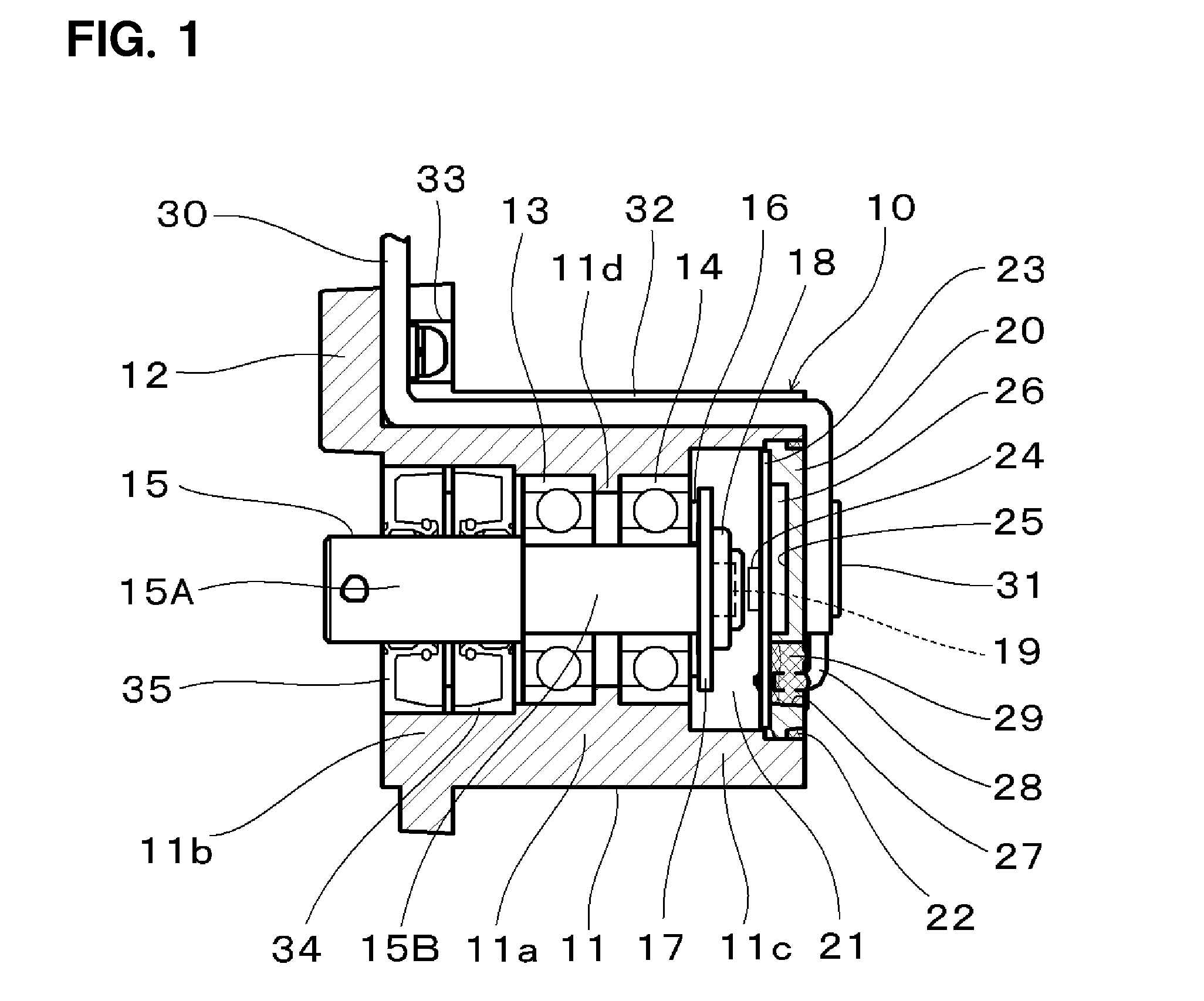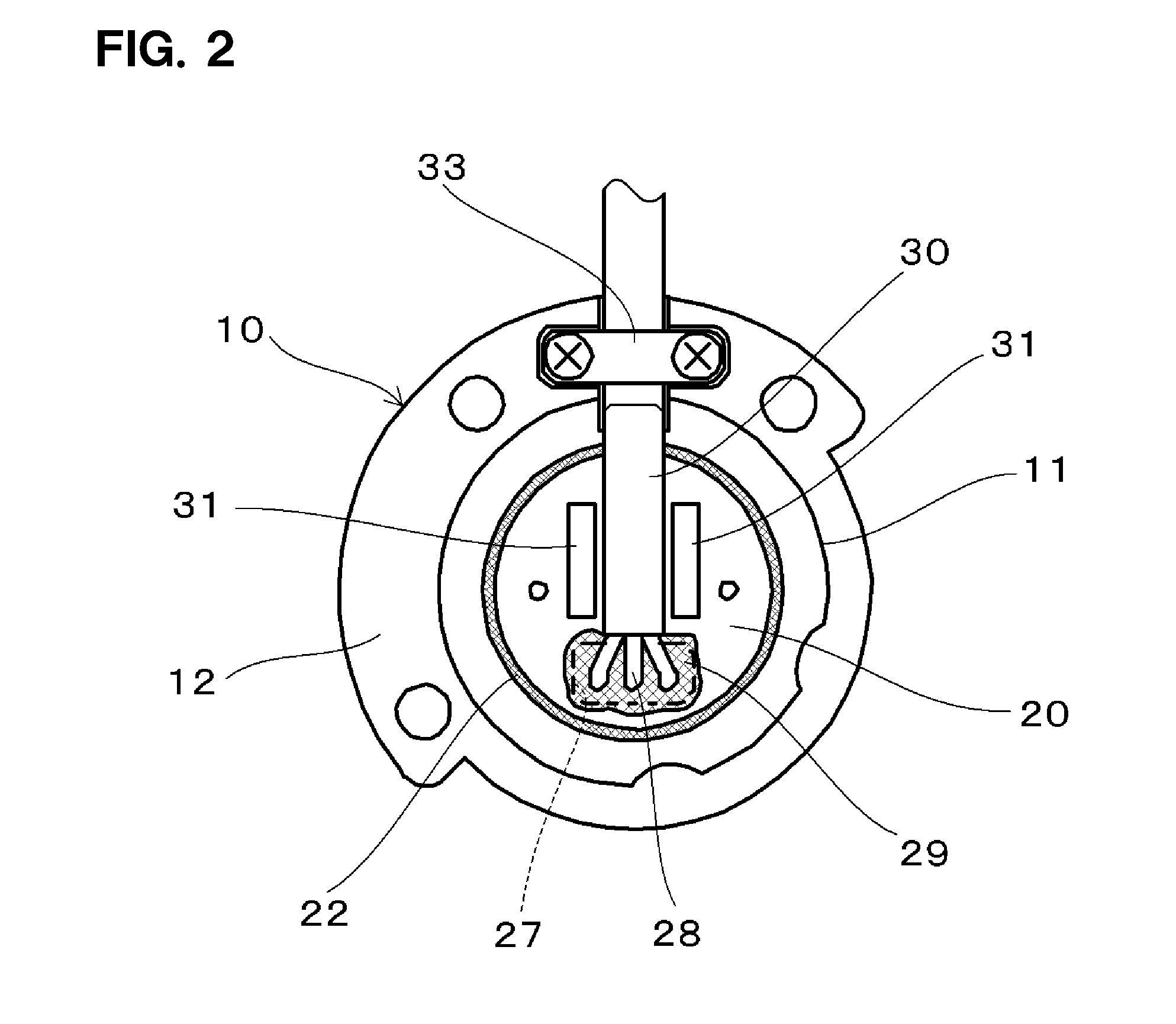Contactless potentiometer
a contactless potentiometer and magnetic technology, applied in the direction of auxillary driving means, adjustable resistors, instruments, etc., to achieve the effect of reducing the siz
- Summary
- Abstract
- Description
- Claims
- Application Information
AI Technical Summary
Benefits of technology
Problems solved by technology
Method used
Image
Examples
first preferred embodiment
[0021]A contactless potentiometer according to a first preferred embodiment of the present invention will be described with reference to FIGS. 1 through 3. FIG. 1 is a sectional view of the contactless potentiometer taken along an axis of a shaft. FIG. 2 is a front view of the contactless potentiometer. The contactless potentiometer preferably includes a housing 10 as an outer shell. The housing 10 preferably includes a cylindrical body portion 11 and a flange portion 12 integrally defined with a base of the body portion 11. The housing 10 is preferably made of, e.g., a non-magnetic metallic material or a resin material. The body portion 11 preferably includes a middle bearing holder portion 11a, a base-side sealing portion 11b having an inner diameter a little larger than an inner diameter of the bearing holder portion 11a, and a tip-end-side sensor portion 11c having an inner diameter larger than an inner diameter of the sealing portion 11b. A pair of bearings 13 and 14 defined by...
second preferred embodiment
[0033]FIGS. 4 and 5 show a contactless potentiometer according to a second preferred embodiment of the present invention. FIG. 4 is a sectional view of the contactless potentiometer taken along the axis of a shaft. FIG. 5 is a front view of the contactless potentiometer. In FIGS. 4 and 5, the same reference symbols as used in FIGS. 1 and 2 designate identical or substantially equivalent components or elements.
[0034]The housing 10 preferably includes the body portion 11 and the flange portion 12. Unlike the first preferred embodiment, the flange portion 12 is preferably integrally defined with the middle bearing holder portion 11a of the body portion 11 not the base of the body portion 11. The body portion 11 is larger in diameter than the body portion 11 of the first preferred embodiment. The shaft 15 preferably includes the base-side large diameter portion 15A and the tip-end-side middle diameter portion 15B. The smaller diameter portion 15B is supported by the bearings 13 and 14 a...
third preferred embodiment
[0039]FIG. 6 is a sectional view of a contactless potentiometer according to a third preferred embodiment of the present invention, which is taken along the axis of a shaft. The same reference symbols as used above designate identical or equivalent portions.
[0040]The contactless potentiometer of the third preferred embodiment of the present invention is larger in size than the contactless potentiometers of the first and second preferred embodiments of the present invention. The flange portion 12 is preferably defined as a monolithic member with the body portion of the housing 10 at the outer circumference side of the sensor portion 11c. The cover member 20 is wholly arranged at the inner circumference side of the sensor portion 11c. The end surface of the cover member 20 is brought into contact with the side surface of the bearing holder portion 11a. Thus, the sensor area 21 is defined between the bearing holder portion 11a and the cover member 20. In case of the first and second em...
PUM
 Login to View More
Login to View More Abstract
Description
Claims
Application Information
 Login to View More
Login to View More - R&D
- Intellectual Property
- Life Sciences
- Materials
- Tech Scout
- Unparalleled Data Quality
- Higher Quality Content
- 60% Fewer Hallucinations
Browse by: Latest US Patents, China's latest patents, Technical Efficacy Thesaurus, Application Domain, Technology Topic, Popular Technical Reports.
© 2025 PatSnap. All rights reserved.Legal|Privacy policy|Modern Slavery Act Transparency Statement|Sitemap|About US| Contact US: help@patsnap.com



